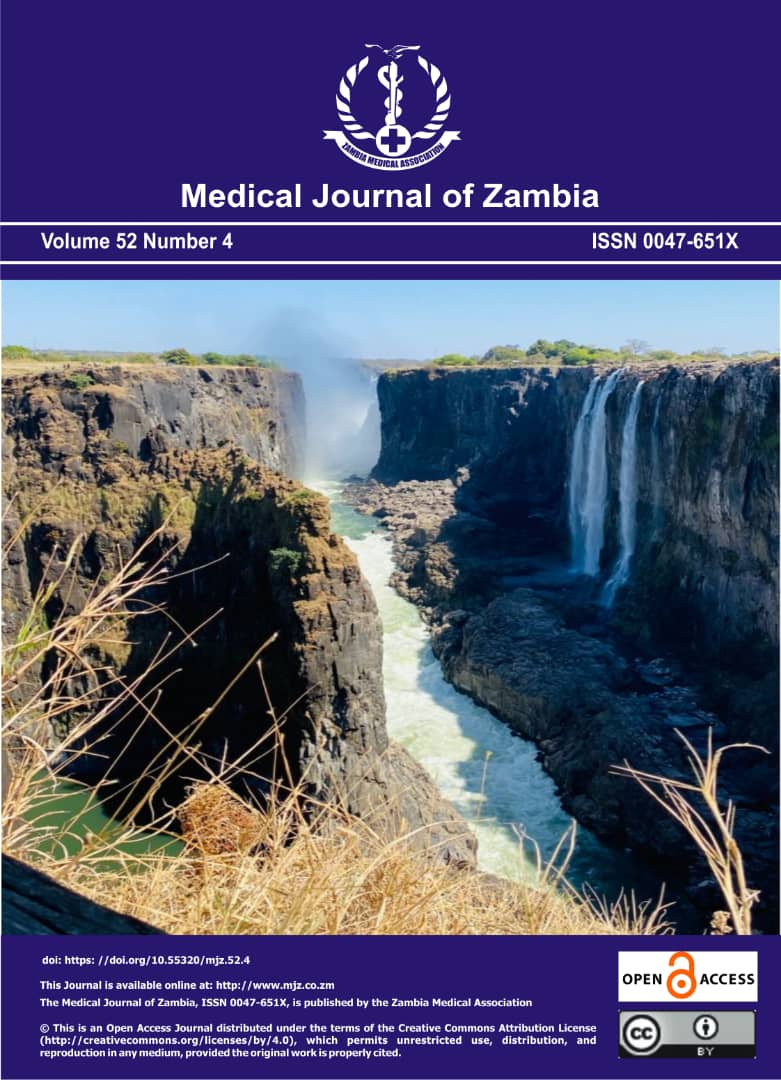EXPLORING EXPERIENCES OF PREGNANCY AMONG ADOLESCENT GIRLS IN ADOLESCENT PROGRAMS; A CASE OF RISE STUDY IN CHISAMBA AND CHIBOMBO DISTRICTS, ZAMBIA
DOI:
https://doi.org/10.55320/mjz.52.4.705Abstract
Background: Adolescent pregnancy poses significant global health challenges, particularly in regions with weak healthcare systems, and is linked to the third Sustainable Development Goal on health. It is associated with high rates of maternal and child morbidity and mortality, with hypertensive disorders, haemorrhage, infections, low birth weight, and preterm delivery being common issues. In Sub-Saharan Africa, adolescent pregnancy accounts for 10-30% of maternal deaths.
The Research Initiative to Support the Empowerment of Girls (RISE) project in rural Zambia aimed to reduce early childbearing by providing economic support to girls and their families, along with community interventions to enhance sexual and reproductive health knowledge.
Objective: This study explored the experiences of adolescent pregnancy among girls who participated in the RISE project in Chibombo and Chisamba districts, Zambia.
Methods: A qualitative phenomenological approach was used, involving 20 girls aged 15-19 years who had experienced pregnancy and received support from the RISE project. The study was conducted in schools within Chibombo and Chisamba districts, including Kampekete, Chombela, Kalala, and Kapopo.
Results: Most participants were 18 years old, in their 9th grade, and from Chibombo district. They typically became pregnant at 16 years of age. Participants reported adverse social and health consequences of early pregnancy, such as social and family neglect, fistula, school dropout, depression, low self-esteem, and forced marriage. The RISE project was viewed positively for its financial support, education on re-entry policy, awareness of early marriage dangers, contraceptive knowledge, and life skills training. Contributing factors to adolescent pregnancy included poverty, peer pressure, traditional practices, and lack of sexual education. Barriers to contraceptive access included prejudice, inaccessibility, and cultural factors.
Conclusion: Adolescent pregnancy in rural Zambia poses severe health and social challenges. The RISE project demonstrates the importance of targeted interventions in reducing early childbearing and supporting affected girls' reintegration into education and society.
Downloads
Downloads
Published
Issue
Section
License
Copyright (c) 2025 Medical Journal of Zambia

This work is licensed under a Creative Commons Attribution-NonCommercial 4.0 International License.









